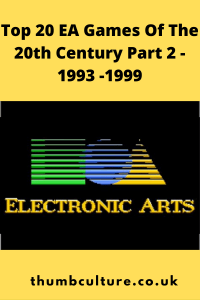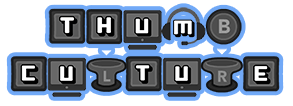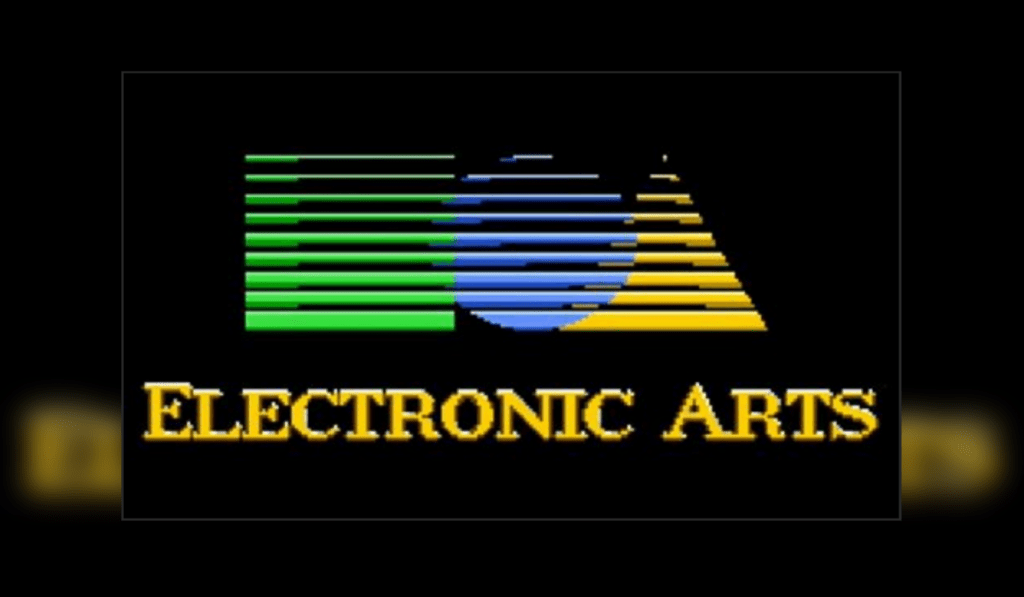
Oh hello, you’ve caught me reminiscing about old EA games…again! Part 1 covered the years between 1986 and 1993, and there were some beauties in there. There were some you might have expected, and also a couple of curveballs thrown in the mix. My Top 20 EA Games all based purely on my own opinion and experiences, and Part 2 will be no different. If you missed Part 1, you can check it out here and let us know what you think. Also, did you know we have a Discord? Come and join the conversation with the team and other TC Noobs here.
So without further ado, let’s dive into the Top 20 EA Games Of The 20th Century Part 2 – 1993-1999.
Syndicate (1993)
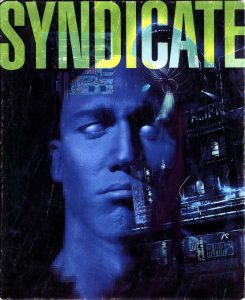
Following the successes of Populous and Powermonger, Syndicate was the game the cemented Bullfrog’s reputation as developers. You basically take on the role of head of a mega-corporation in a cyberpunk-style world. The first rule of business is to be the best, by ANY means. It is your job as the player to make that happen. This is not a method through diplomacy though, oh no, not at all! Violence is how you get ahead in the year 2096
The game takes an isometric perspective similar to X-COM, but rather than being turn-based, your actions are in real-time. You are in command of a team of up to four cyborg agents who take on various missions. These could be infiltration, rescuing allies, assassinating rival agents, basically anything to destroy the competition.
As you progress, more powerful weapons become available through your own research and development. This also applies to upgrades for your agents. Don’t forget, in your quest for global dominance, you must look after the people in your territory. If you don’t, they will revolt against you which could cause some serious problems!
FIFA International Soccer (1993)
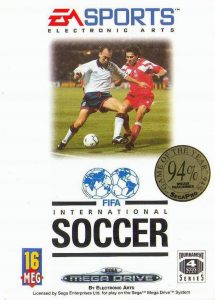
No list on EA Games is complete without at least one football entry, so why have I chosen FIFA International Soccer do I hear you ask? Not only is it the first game in a franchise that is arguably the strongest sports franchise today, but for a few other reasons. Firstly, it was probably the first time you heard a synthesised voice on your Mega Drive. Secondly, it was the first time you heard “E. A. Sports. It’s in the game”. But lastly, and more importantly, you could run away from the ref. Yes, that was a thing. You could foul your mate, and the ref would try to give you a yellow card and you could literally just run away from him. It was amazing! Also, absolutely cheesing goals by standing in front of the keeper as he goes to boot it out…classic!
As the name suggests, there was no club football in this iteration. Instead, there were 78 international teams with which you could play an Exhibition match, Tournament, Playoff, and League. The player’s names were also all fictional. The game uses an isometric viewpoint, which I think might have been a first for football games. Others beforehand were with a top-down birds-eye view.
Despite it being released in December 1993, it sold half a million copies in its first four weeks and became the best selling game of the year. If you have never seen someone running away from the ref…you’re welcome!
Theme Park (1994)
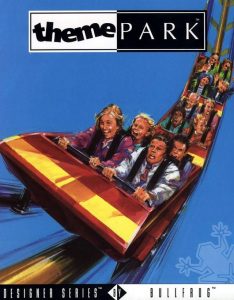
If you haven’t played Theme Park, where have you been? In fact, stop reading this article and play it now. Actually, don’t, finish this first. Theme Park came from the creative mind of Peter Molyneux. It was originally going to be a Disney Land game, but that idea was quickly scrapped because of the amount of creative control Bullfrog would lose. He wasted a business simulation game that was fun, and that is exactly what he did. Development took about a year and a half and was even supposed to have multiplayer, where players would send thugs to other players theme parks. This unfortunately was dropped with only two weeks until the deadline.
So the idea is to make your dream theme park and make it the best and most profitable one there is. Starting off with just a plot of land, you will begin to build rides and facilities. Set your ticket prices and of you go. Business is never easy though and you can’t run it without staff. Without staff, there is no one to keep the park clean, maintain the rides and sell refreshments.
For staff, you need money. For the money, you need customers. And for customers, you need to give them a good reason to keep coming back. There are many ways in which you can entice more customers. For example, pleasant scenery or increasing the sugar content in your ice cream. If the park is poorly maintained, thugs will come in and just make your life hell and upset customers. For the hardcore business types, you can even go into managing contract negotiations, stocks, and shares.
The end game is essentially to make enough profit in your yearly review to be able to sell it and start another park somewhere new. I would go so far as to say this could be an educational tool for young entrepreneurs. Needless to say, Theme Park sold very well across over 15 systems. So grab a copy because it is amazing fun. Also, be aware of how you make your rides. It IS possible to kill your customers.
Road & Track Presents: The Need For Speed (1994)
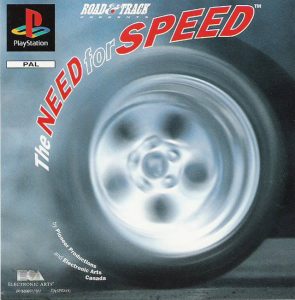
Ah, the forgotten origins of the Need For Speed franchise. Back in 1994 audio clips and FMV was a big thing and this was used within the game to detail information on the tracks and cars. This iteration of NFS had obtained licenses for 24 cars with only 9 playable. These were generally Japanese imports and exotics, the rest were used as traffic and a Ford Mustang SSP police car.
There only 9 tracks on offer, 3 open tracks for road races, and 6 closed-circuit tracks. With open races, it was common to become involved in a police chase. If you happened to get caught you would either be given a ticket. If you got 3 tickets then you would get arrested.
The Need For Speed was a little short on game modes. Modes available were Time Trial, Head to Head, Single Race, and Tournament. It’s only in the Head to Head mode you would encounter traffic and cops. This title did very well with the critics often being praised for its realism and use of FMV. It even reached Number 5 in the UK sales chart and was nominated for “Action Game of the Year” for Computer Gaming World magazine.
You can check out my article A Brief History Of Need For Speed Part 1 here.
Skitchin’ (1994)
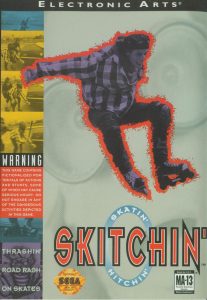
Here we are at the second skateboarding game on our list, Skitchin’ and it is a Mega Drive Exclusive. Not really a huge amount of plot to this one, but think of it like Road Rash, but on rollerblades. In fact, that’s exactly what it is, but it works and still feels fresh. You are road racing across several cityscapes filled with obstacles and opponents out for blood. Violence is the name of the game though, as you fend them off with crowbars, nunchucks, and baseball bats as you make your way to the finish.
Skitchin’ by definition is when a skater will grab hold of a car’s bumper to get a two. This is quite useful in the game to get ahead of your opponents. At the end of the race, you are rewarded with money for basically breaking the law. Additional bonus can be achieved depending on how the complexity of tricks you pull off, or how many people you batter just to get to the front. Money is then spent on upgrading gear because as in real life, it wears out over time. Just be careful not to get arrested otherwise it’s game over! Add a pretty Skitchin’ bass-heavy soundtrack into the mix and you got yourself one of the best in-line skating games there is.
Fade To Black (1995)
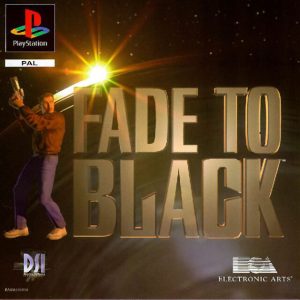
As the sun begins to set on the 16-bit generation on gaming, PlayStation and other systems stand up to usher in a new era of gaming. With Sony’s first entry into the gaming hardware market, it was unsure how it would go. During the 32-bit era, few made it through alive, but some weren’t so lucky. The original PlayStation sold over 100 million units which was more than three times the closest competitor, the Nintendo 64. Not too shabby for a first console eh Sony! It even outsold the Nintendo Wii, so there is a very good reason it is one of four PlayStations in the top five best-selling consoles of all time. What made it so good? Optical media, and good games.
So that brings me on to Fade to Black. It was originally released in 1995 on PC but was ported to the PlayStation a year later. This is the sequel to Flashback, also developed by Delphine. Once again, you play as Conrad. You awake from cryogenic sleep to see that the aliens you thought you had destroyed before have imprisoned you and now threaten to enslave the human race. Good times!
Where Flashback was a cinematic platformer, Fade To Black is more of a third-person shooter. As you puzzle and shoot your way to freedom, movement can be a bit limiting with the lack of climbing and jumping. The story is a great little sci-fi adventure and playing this for the first time in 1996, I thought I had witnessed the ‘future of gaming’
Die Hard Trilogy (1996)
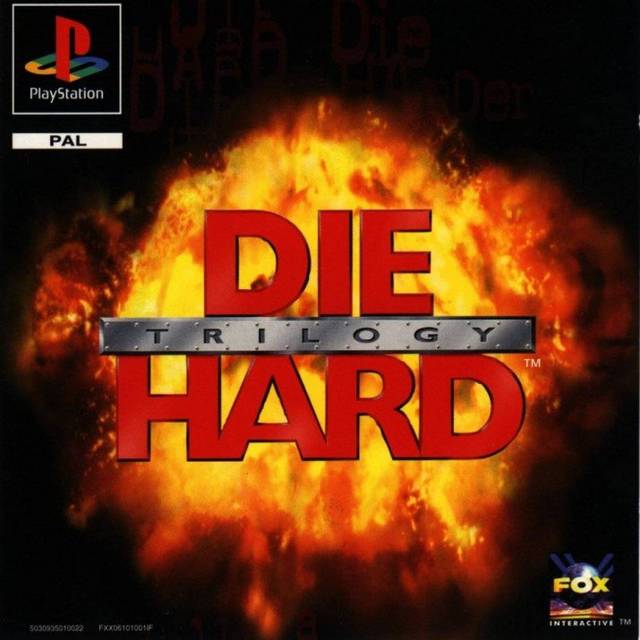
Here we have a game that needs no introduction. Die Hard Trilogy was developed by British developers Probe Entertainment but published in Europe by EA. It was also released on the Sega Saturn but it is the PlayStation version that holds my memories. If you hadn’t guessed, the game is split into three parts; one to represent each movie. Oddly enough, the Die Hard with a Vengeance part was developed first as it was supposed to be its own thing. But American publishers had other ideas and asserted to make it a trilogy. It was also planned to release on the Mega Drive and 32X, I’m not sure how that would have worked given the hardware capabilities, or lack thereof.
The game reviewed and sold pretty well and by March 2000, it had sold two million units. As I said, the game is broken down into three movies, and each has a vastly different style of gameplay.
Die Hard is set in the Nakatomi plaza and was a 3D third-person shooter. As McClane you have a range of weapons available as you fight through the floors of the plaza. Your goal is to rescue all the hostages on the way. Once all the hostages on the floor have been rescued, a bomb is then sent down in an elevator. You have 30 seconds to locate this bomb and take the elevator to the next floor. Happy trails!
Die Hard 2: Die Harder is an on-rails shooter set in the Airport. It’s highly recommended that you use a light gun for this segment as it is frustrating without. It is presented in an arcade-style like Virtua Cop. As you blast at terrorists and collect ammo on the way, you could also destroy the environment to aid you in your fight
Die Hard with a Vengeance as you may expect is a driving game. You get to joyride around New York looking for bombs to diffuse. How do you defuse them? By driving into them of course! I can see how that works. There are power-ups along the way which can be extremely handy as you’re on an unforgiving time limit. No extra points for running over pedestrians, but it just has to be done anyway. Yippie-Ki-Yay!
Theme Hospital (1997)
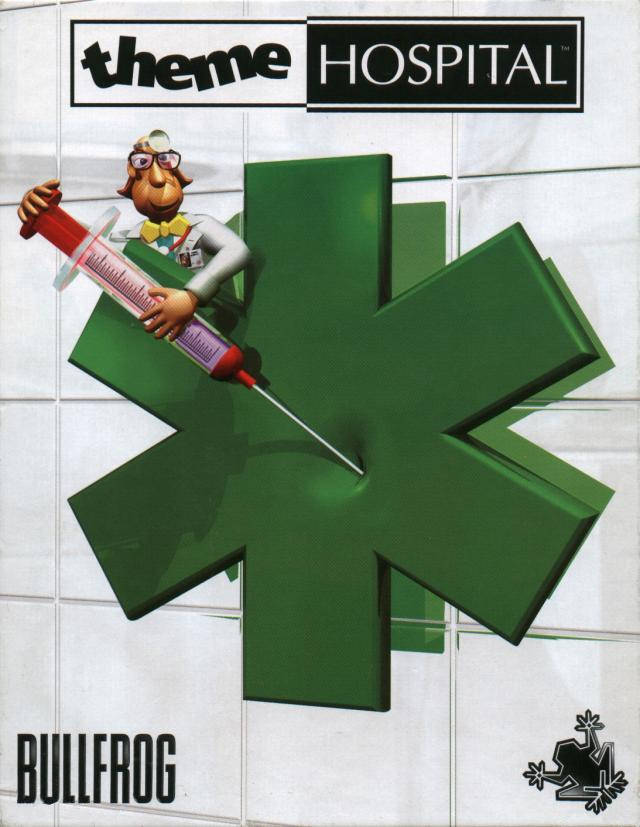
Now I tried to keep this list to have only one game per series or franchise, but I HAD to include Theme Hospital. How could I not? This is another business simulator developed by bullfrog, only this time you build and maintain a hospital and cure patients of all kinds of crazy illnesses. It is literally a matter of laugh or death. The biggest problem was that there were too many creative ideas. Initially, the game was supposed to feature 4 different timelines; medieval, Victorian, modern and futuristic. Due to time constraints, this and many other things such as other diseases couldn’t be implemented.
Theme Hospital did come under fire from the Houses of Parliament and the NHS managers who said it was mocking hospital management. The Daily Telegraph called the game “sick” and said the British Medical Association were using it ti train management staff. Despite all this, the game was a commercial success selling over 4 million copies and being ported to the hot console at the time, the PlayStation which worked surprisingly well.
Much of the code was borrowed from Theme Park, as the team met in the pub one night and each developer was assigned a task and took ownership of that. So this is hospital management, but not as we know it. This is running a hospital as a business and as you progress there are things trying to wreck that business such as earthquakes and epidemics. Once you have your hospital and staff you need to start treating patients and curing them of their amusing ailments. You will need the right tools to cure Bloaty Head, Hairyitis, King Complex, Slack Tongue and many others.
Of course, there is maintenance. The sick will vomit and you will need to get that cleaned up. Patients (customers) too cold? Better install some radiators. It really feels like everything has been thought of in this management sim. More recently there was a spiritual successor to Theme Hospital called Two Point Hospital and you can read our review here. Seriously, if you want the game but a bit more up to date, go and check it out!
System Shock 2 (1999)
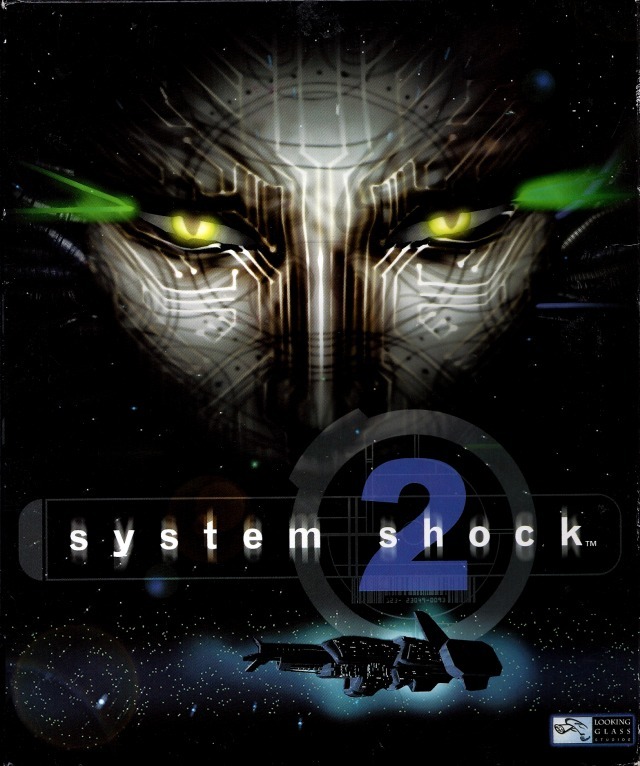
System Shock 2 is an action RPG from a first-person perspective that couples stealth and shooting mechanics in a dark sci-fi cyberpunk setting with horror elements. The game was published by EA and developed by both Irrational Games (now known as 2K Boston who made BioShock) and Looking Glass Studios. Development began in 1997 and took 18 months to create with a budget of $1.7 million. Despite winning multiple awards and garnering critical acclaim, System Shock 2 had only sold nearly 60,000 by 2000 which is less than half of its predecessor. In turn, the game has become a bit of a cult classic.
The year is 2114 and you awake from your cryo-tube to find that your ship has been infected, and everyone on it is either dead or mutated. It’s not long before you are contacted by a woman on the ship and your task is to rendezvous with her. This of course means negotiating the mutated and seemingly endless corridors while the rouge AI SHODAN is taunting you as you try and piece things together.
You will start by picking a class to specialise in and throughout the game upgrade your weapons and enhance your skills as required. Finding out what happened about the spaceship manifests in the form of audio logs and other such items. Oh, and watch out for the ghosts
If you love shooting games with a bit of an edge, RPGs that involve paranormal psionic powers with a cyberpunk aesthetic, you owe it to yourself to play System Shock 2.
Fun Fact: The voice of SHODAN, the rogue AI was that of Terri Brosius, the wife of the audio director for Looking Glass Studios.
Medal of Honor (1999)
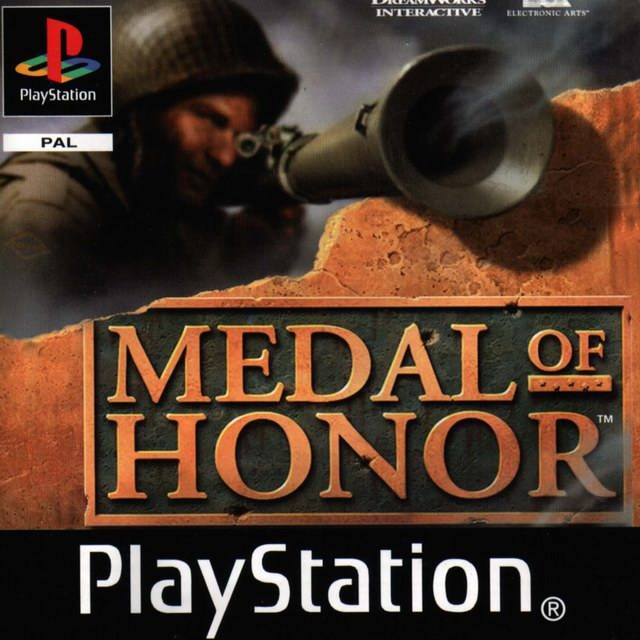
The first game of a franchise that started off so strong, but ultimately fell by the wayside as the FPS genre grew. By the time Halo and Call of Duty were massive, the Medal of Honor franchise had fallen. This first instalment was developed by DreamWorks Interactive. The company was bought out in 2000 and renamed EA Los Angeles and was rebranded in 2010 to Danger Close. Sadly, for Danger Close, the final game Medal of Honor: Warfighter saw its demise in 2012. It’s not all doom and gloom though. Some staff went on to form EA DICE and they have made some great games one the last 10 years.
Anyway, back to Medal of Honor. The game started development in 1997 when Steven Spielberg (yes, the film director) got in touch with DreamWorks with an idea for a video game. As a result, he wrote the story for it. Inspired by his son playing GoldenEye 007 on N64 and his love for World War II, they got to work. At one stage the game was almost cancelled as a Medal of Honor recipient called the game dishonourable. Luckily, after a demonstration, he changed his mind and the project was able to go on. Good job too because there are some great entries in the series. Spielberg had also worked with retired U.S. Marine Captain Dale Dye once again. Dye put the developers through training the same way he did when he was consulted on the movie Saving Private Ryan.
You are Jimmy Paterson and the night before June 6th, 1944 (D-Day) you saved your crew, and now you are assigned to the OSS (Office of Strategic Services). From here you take a series of fictitious missions ranging from being disguised as a Wermacht officer to destroy a railgun, to entering Germany to destroy a V2 rocket before it can be used against the Allies.
This was a war game unlike anything else you had played. You got to use antique weapons of which the sounds were recorded for adding that layer of realism. Add into that some genuine World War II footage as cut scenes, you really felt part of the war in 1999. These are all things we take for granted now but back in the day it felt like the developers really went the extra mile. Medal of Honor received rave reviews and there is a sentiment that still stands today; there is nothing better than shooting a Nazi in the face!
So that concludes our list of the Top 20 EA Games Of The 20th Century. Did we miss anything you would have liked to have seen on there? Let us know in the comments below
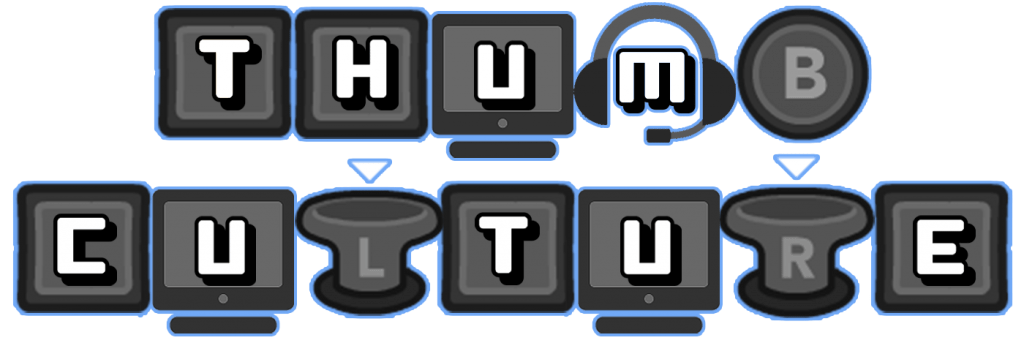
YouTube | Facebook | Twitter | Instagram | Twitch | Discord | Podcast
